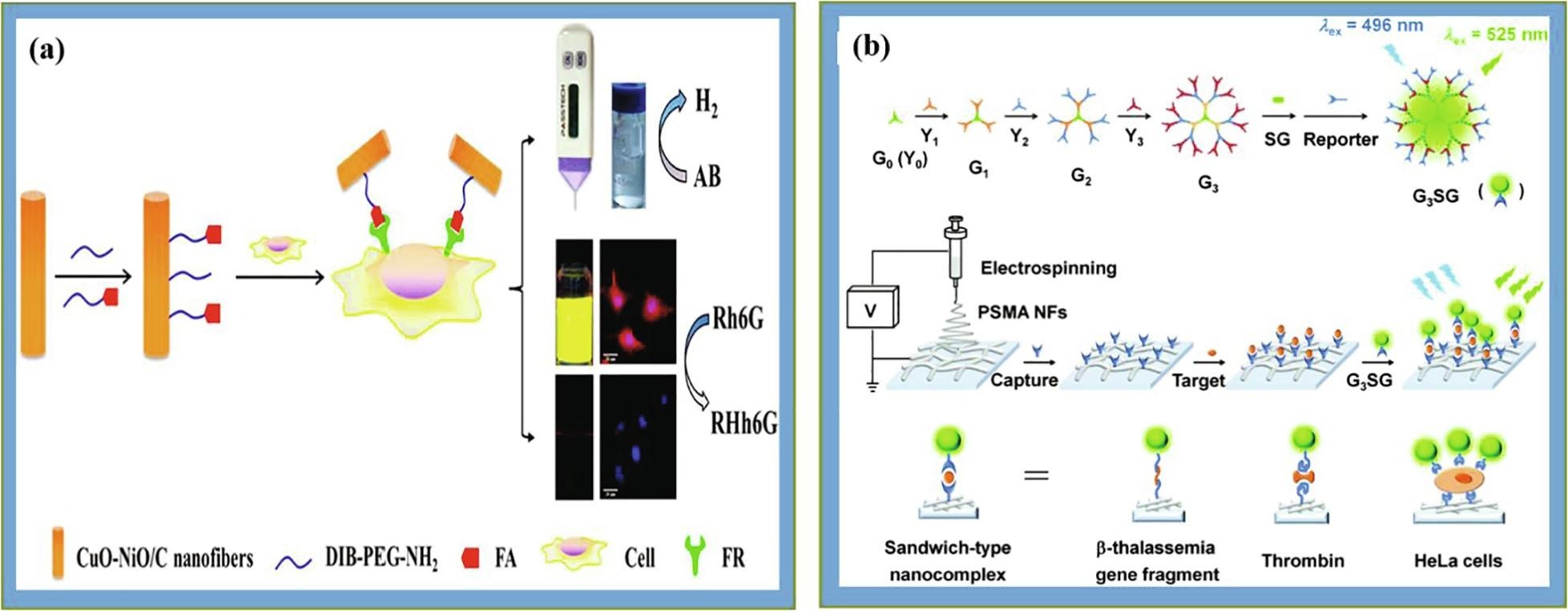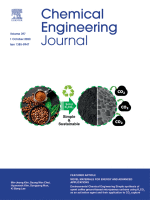Evolution of Electrospun Nanofibers Fluorescent and Colorimetric Sensors for Environmental Toxicants, pH, Temperature, and Cancer Cells–A Review with Insights on Applications
This review comprehensively covers the electrospun nanofiber, structural and morphological effects on optical sensing, and sensing characters towards environmental toxicants including recent trends, breakthroughs and future perspectives.

(a)Schematic representation of the FA-CuO-NiO/C NFs fluorescence imaging and pressure-based detection platform. Adopted with permission from Ref. Copyright 2018, American Chemical Society. (b) Schematic of the construction and rationale of the sensing platform. Adopted with permission from Ref. Copyright 2015, The Royal Society of Chemistry.
Technology Overview
Electrospun optical nanofiber serves better for toxicant sensing. Optical nanofiber membranes morphology governs the toxicant sensing. Optical sensory nanofibers work promising with good sensitivity. Sensing modes and easy readouts contributes for rapid toxicant detection.
Applications & Benefits
This review can probably function as a step forward to solve the puzzle in sensory and next-generation optoelectronics based predominant research works with a broader vision of developing a greener and safer planet.
Abstract:
Heavy metal and other toxicant detection in natural resources like water, air, soil and food is vital for environmental safety, personal hygiene, and public health care. Abundant number of sensor has acquired its wide and pivotal role in establishing the peaceful and healthy environments. The reliable features such as detection range, response/recovery time, stability and portability is in its urgency for achieving its lifetime applicability. For ultrasensitive chemosensory applications, colorimetric and fluorescent nanofibers engender a linear range, the lowest detection limit, and faster response toward harmful toxic pollutants such as heavy metals and other toxicants including gases, pH, temperature, humidity, and cancer cells. In this review, we surveyed various modes of sensing, sensor fabrication and the evolution of naked eye visible color optical sensors developed with electrospun nanofibrous membranes along with their strength and weaknesses. The review outlines the obstacles, trends and breakthroughs achieved in optical sensory nanofibers and it will definitely inspire the research community in recognizing and overcoming the interdisciplinary challenges to achieve the cleaner greener environment.

Evolution of Electrospun Nanofibers Fluorescent and Colorimetric Sensors for Environmental Toxicants, pH, Temperature, and Cancer Cells–A Review with Insights on Applications
Author:Venkatesan, M., Veeramuthu, L., Liang, F.-C., (...), Chang, S.-H., Kuo, C.-C.
Year:2020
Source publication:Chemical Engineering Journal 397,125431
Subfield Highest percentage:99% 2/340 Industrial and Manufacturing Engineering (2019)
https://www.sciencedirect.com/science/article/pii/S1385894720314236
